If a city like Lisbon, disintegrated and variable, universal and with that messy charm that can only have those that were and remain, conquering and large heart metropolises, if I say, would have a Center, a soul or a lung that gave him life, that would be the Rossio Square.
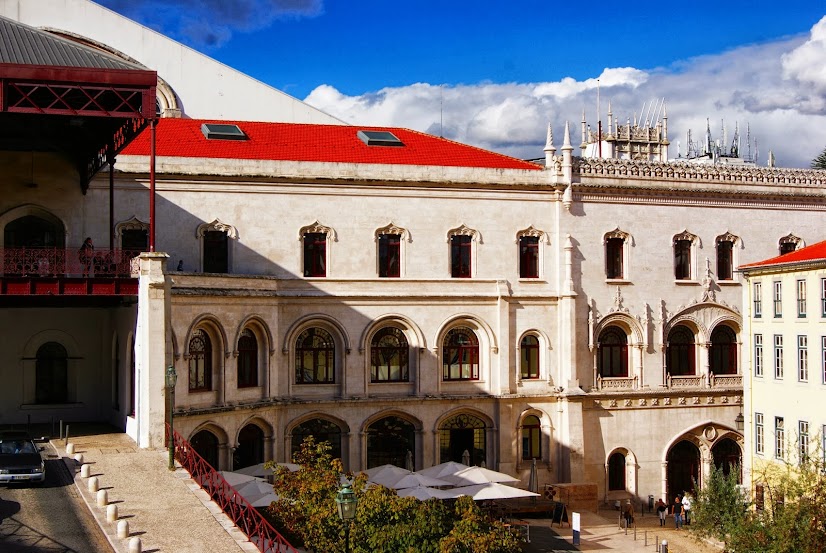

Because even having so many and so great sights, here and there, so much charm and so much saudade, Lisbon still needs its people and its air to keep on living.

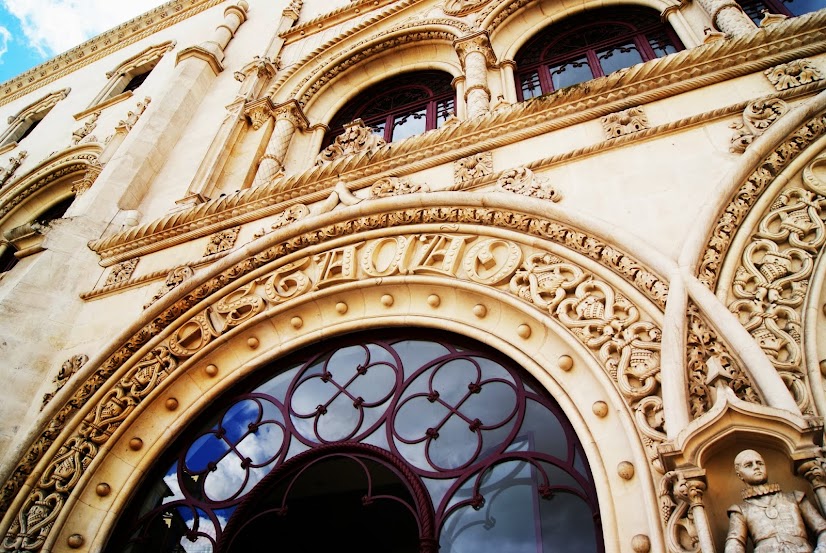
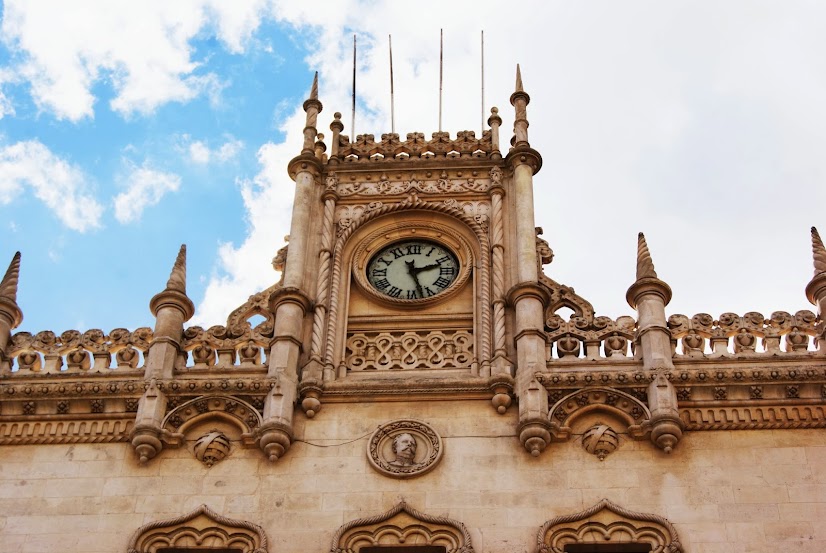
Nothing happens if sometimes Praça do Comércio becomes the center stage, that is only occasionally. Rossio is known to be powered by the history and the future in equal parts, by the love that had the Marquis de Pombal, who rebuilt it and decorated as a Lady of high rank, with the Calçada which serves as a backdrop to two spectacular Baroque fountains and the statue of dom Pedro IV, King of Portugal.



This square, not just vain, with its elegant theatre of Dona Maria II, neo-classical and built on the grounds of the Holy Inquisition is cultured. Art on heresy, crushing coarse beliefs and political interests disguised as holly law.

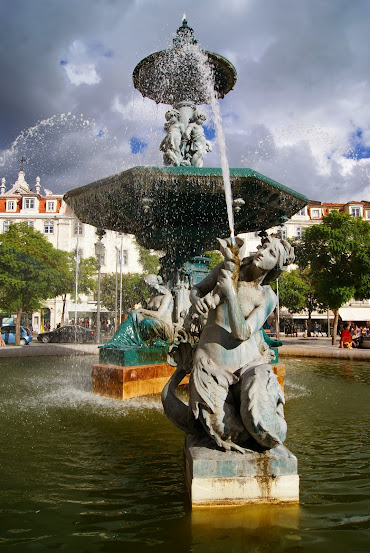












On one side, a little hidden, one of my jewels of Lisbon, beautiful filigree of the Estação do Rossio, with its marvelous entry arches. If we are not sufficiently mesmerized by these wonders, let us approach to one of the bordering locals of the square, like "A Ginjinha" and taste a delicious cherry liqueur, fine and elegant as Rossio..
Because even having so many and so great sights, here and there, so much charm and so much saudade, Lisbon still needs its people and its air to keep on living.
Nothing happens if sometimes Praça do Comércio becomes the center stage, that is only occasionally. Rossio is known to be powered by the history and the future in equal parts, by the love that had the Marquis de Pombal, who rebuilt it and decorated as a Lady of high rank, with the Calçada which serves as a backdrop to two spectacular Baroque fountains and the statue of dom Pedro IV, King of Portugal.
This square, not just vain, with its elegant theatre of Dona Maria II, neo-classical and built on the grounds of the Holy Inquisition is cultured. Art on heresy, crushing coarse beliefs and political interests disguised as holly law.


On one side, a little hidden, one of my jewels of Lisbon, beautiful filigree of the Estação do Rossio, with its marvelous entry arches. If we are not sufficiently mesmerized by these wonders, let us approach to one of the bordering locals of the square, like "A Ginjinha" and taste a delicious cherry liqueur, fine and elegant as Rossio..
Fly over the beautiful Lisbon is easy, dream Lisbon is as simple as reaching the Baixa, the favorite of Pessoa and first of all impress us with the beauty of theelevator designed by Mesnier du Ponsard, one of the most beloved disciples of Eiffel, and then plunge into a journey in time and space.


In time, because it is still in operation 90% of the original machinery, including the case of the elevator with all luxury of details and materials used at the end of the 19th, and in space because it was not created as a tourist attraction, but as it is today, in part, it serves to provide regular service between the lower city and the steep Chiado.


Always crowded with tourists and people of Lisbon, it takes little less than a minute to make your journey to the top, where without leaving the structure awaits a precious and filigree balcony which gives us a splendid view of all Lisbon, the Tejo river and the nearby ruins of the Igreja do Carmo, a real Gothic relic than after the 1755 earthquake only maintains walls, the arches and the header.




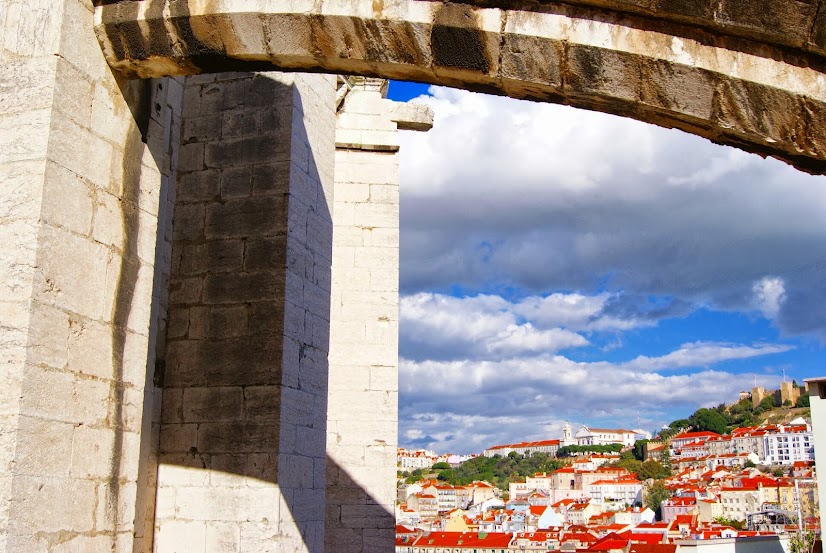
Oh, I forgot to say that for exercise lovers there is a staircase in spiral that saves the 32 meters from the base to the top, where it waits a restaurant where you can eat some specialities of the city or savor a delicious Brazilian coffee or "bica".




And you have to recover strengths. So we stop at the Restinga. This is another one of those places that you only know by pure chance or because a friend of Lisbon, which you can appreciate much, wants you to know.

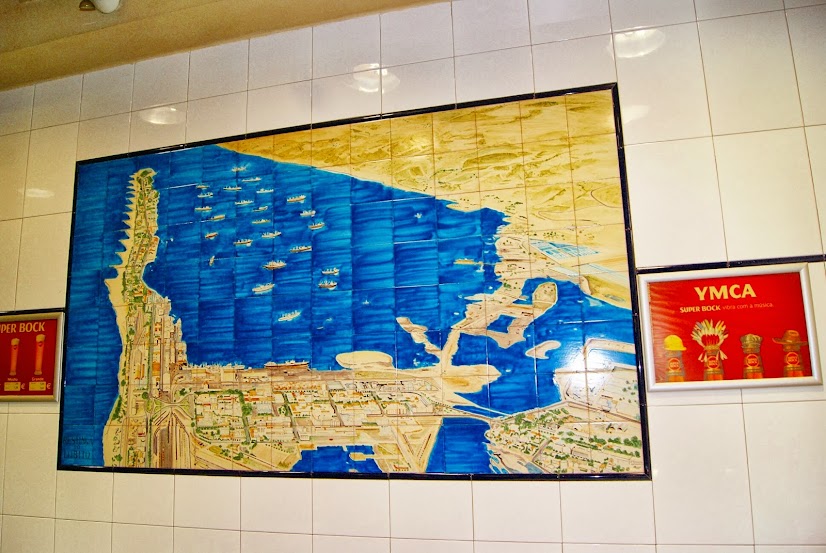
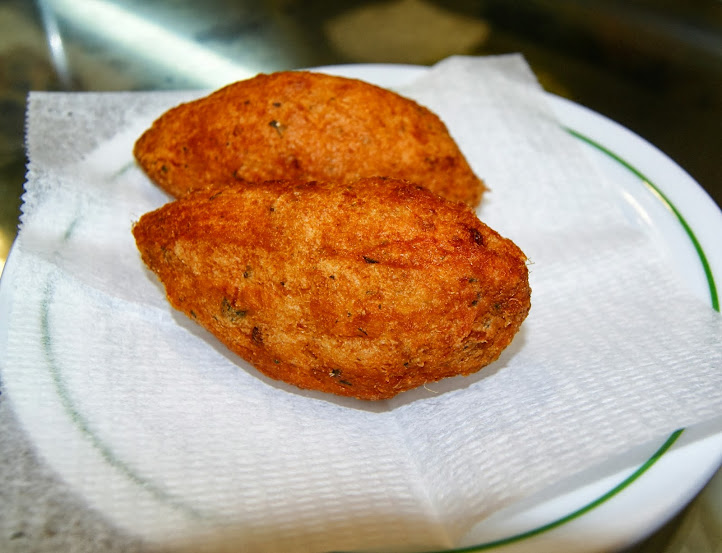

And that was my case, also with a hunger that now bedeviled my vision and made me not able to distinguish an "elétrico" from a cake of Belem; so we we made a stop on the road and entered in this small but cozy establishment.The layout is perfect, since on the one hand it has a bar with shelves where it exposes the delicious sweet and savoury cakes that we will enjoy, and on the other loose tables where have a sit and savor the rich snacks and some other combo dish or a simple but intense coffee with a bun.



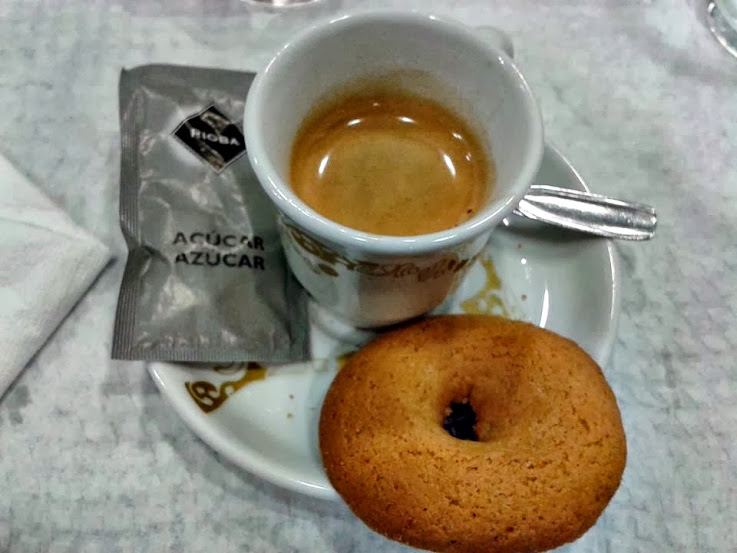
The savory pastries are a real delight. The delicious Faisaninhos, the folhados of meat, spinach and sausage, the hen coxinhas, the sandes, roasted meat, egg or cheese.Meals of delicious homemade taste, in the Centre of Lisbon. To regain energy tasting the specialties of the Lisbon cuisine. Highly recommended!

And all our strengths are necessary to reach the final goal of the day: Belem. And starting by the Monastery of the Jeronimos in the heart of Belém, the monumental soul of Lisbon, that rises from 1502 as Palace of faith, a white stone fortress and colourful stained-glass windows.

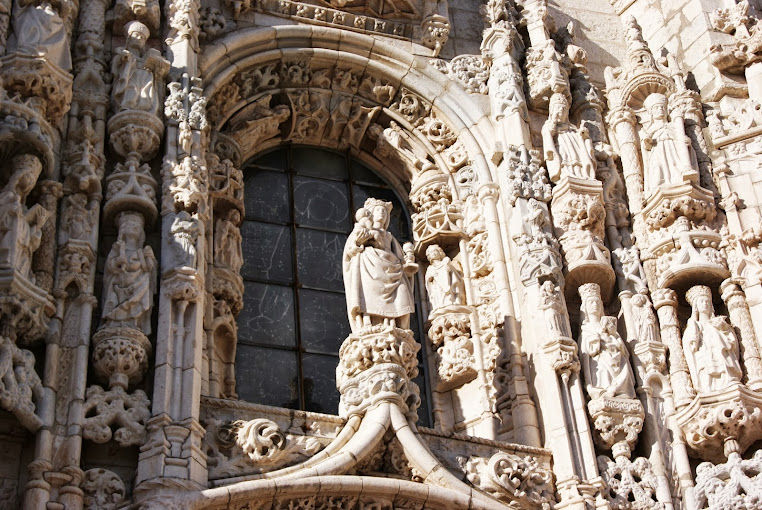
The site to build it was not chosen randomly, since the area, near the ancient port of Restelo, was protected by a tiny Chapel of the Madonna of Belém, where tradition says that prayed Vasco da Gama the night of July 7, 1497, before embarking on his historic trip.



So the ground was already sacred, only waiting to be given the importance it deserved. By assumed that the style could not be other than the Manueline, rich in references to the sea and praises conquests, new discoveries and treasures across the seas. And that the new inhabitants of the monastery would be those who would provide spiritual solace to the sailors who undertake the long voyages ordered by Manuel I and which were partly financed by the Knights of the order of Christ, which had its headquarters wall to wall.
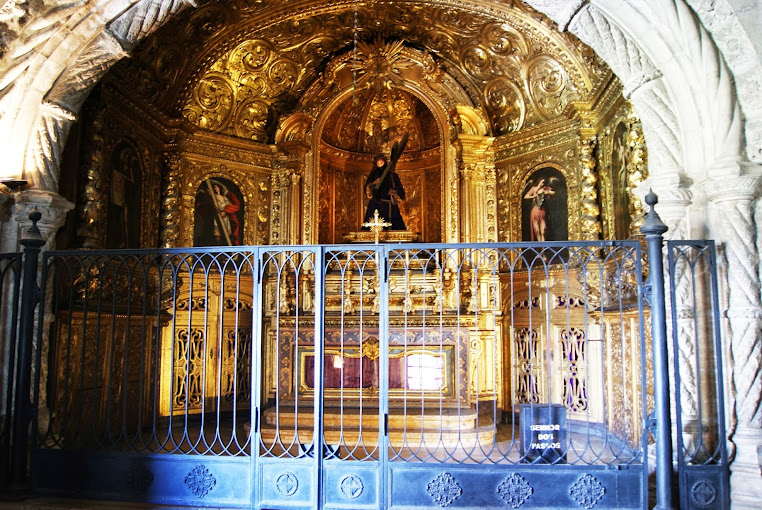

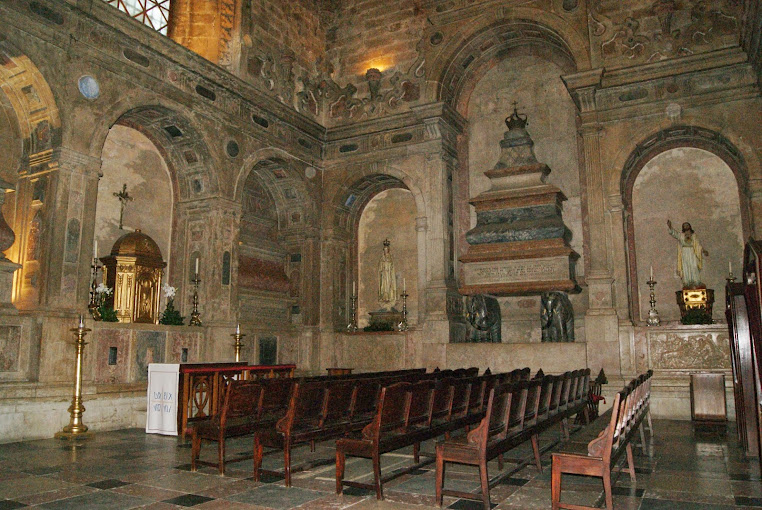

However they did not collaborate financially with the construction, since it is financed entirely with money from "pepper", as it was called to that one obtained by the traffic of spices.


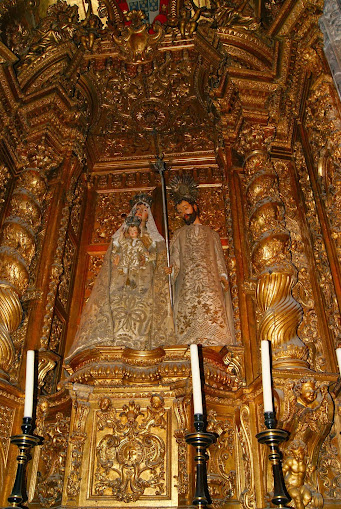

And the monks lived there until 1833, year in which were abolished the religious orders in Portugal, and become Casa Pia de Lisboa, an Institute for the care of abandoned children. National Monument, in 1983, was declared Heritage with all honours.
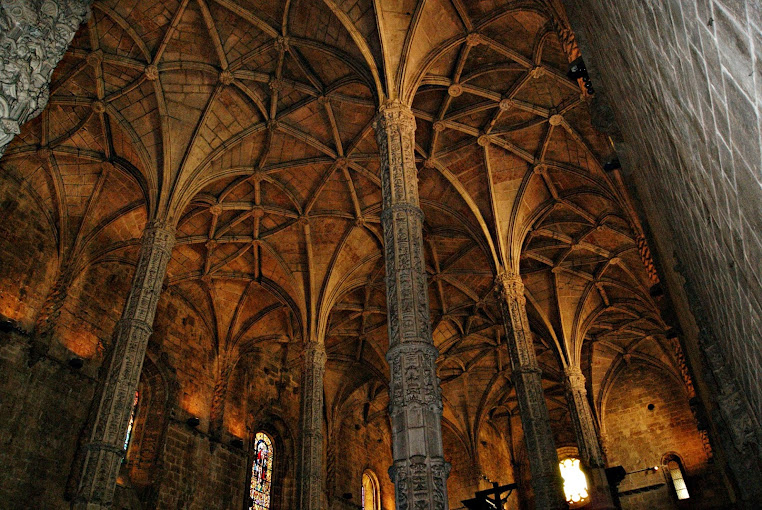


Inside, we remain silent to hear the talk of stones, which tell us about the fortunate and unfortunate deeds of the Portuguese sailors, fear of God and glory to him, stories of stories that reflect the graves of the great Vasco da Gama, Camões, Pessoa or King Manuel I and his wife Dona Maria... and the enigmatic empty tomb of King Dom Sebastião that never returned from his crusade in Africa. Sky of columns and ceilings, which aim to remind perhaps the Amazon discovered with blood and tears by the brave Portuguese, stained-glass windows that let go through the exact amount of fairly light so that the magic of the temple does not break. Back at the top, a stunning crucified who reigns above all space and time

We leave in silence, not only by respecting sacred soil, but also envisioning the grandeur of the Portuguese Empire of which the 1755 earthquake left just a few precious remnants...

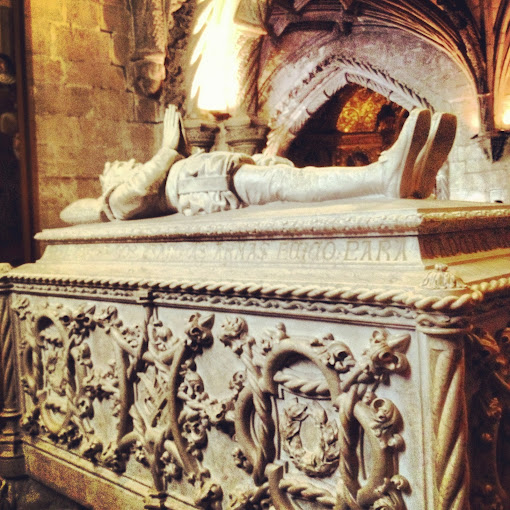
Richness, glory, new territories, new souls for the Church, new opportunities for those who might not have them on the old continent...That and more was expected on the other side of the dark ocean to those who had enough arrests to embark in the shells and rafts that floated just at sea in the age of the great discoveries.It was a hard way. Months of crossing and years of expeditions on land, fighting diseases, adverse climates and poisoned arrows.

Many fell; thousands of souls and bodies which, with their sweat and blood, helped to raise an empire that was the envy of many countries. And as a backdrop to all this tragicomedy was Belem. Belem that said goodbye to its sailors and soldiers from the banks of the Tejo, that prayed for them from the chapel of the Virgin, who comforted them in Jeronimos and that defended them from the tower of Belem, which was the last image of the homeland and the first image of greatness and power. So, although late, it was necessary to finish decorating in the way it deserved, a center that was the core of the jewels surrounding her.

So it was decided to renovate the space and build a 280-metre side, the Plaza do Imperio square, making it one of the largest in Europe. In the centre of the square a 3,300 m² garden with a gigantic fountain.


I said before, that it was built a little later, in the time in which that "saudade" of greatness was remembering the past, in the exhibition of the Portuguese world in 1940.

Now not only serves as a tribute and memory of an empire and the living forces that built them, but rather it serves as a small lung to breathe a past, a present and a future.
And it is that Portugal seafaring vocation is so intense and pervasive that it seems to run salt-water through lusitanian veins instead of blood. And a sample is the Padrão dos Descobrimentos.
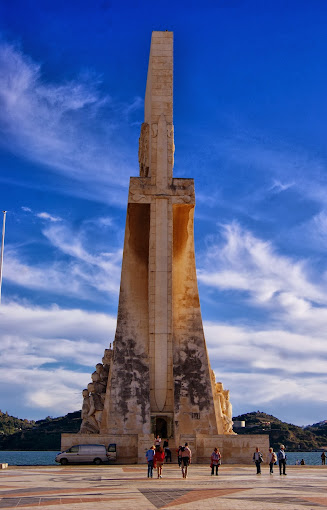

The ocean without Portugal, Portugal without the ocean is not conceived. Those whoploughed through the great sailors and parish priests as Vasco da Gama, Fernao de Magalhaes, the poet with his Lusiads Camões, the painter Nuno Gonçalves and Kings Manuel I or the one who leads the long row of 32 celebrities, Henrique, the Navigator, who financed the expeditions to the African coast and founded a school of navigation in Algarve.




The 500th anniversary of his death was thought to erect this monument in 1960, creating it in the form of a caravel in honor of the Portuguese Navigator Spirit. What else?
The environment reinforces that spirit with a compass rose which is 50 meters in diameter right in front of the monument of 52 meters high and which tells the story of the Portuguese discoveries over time. It is essential to visit it when evening falls and the stone takes over all the colors of the sunset.
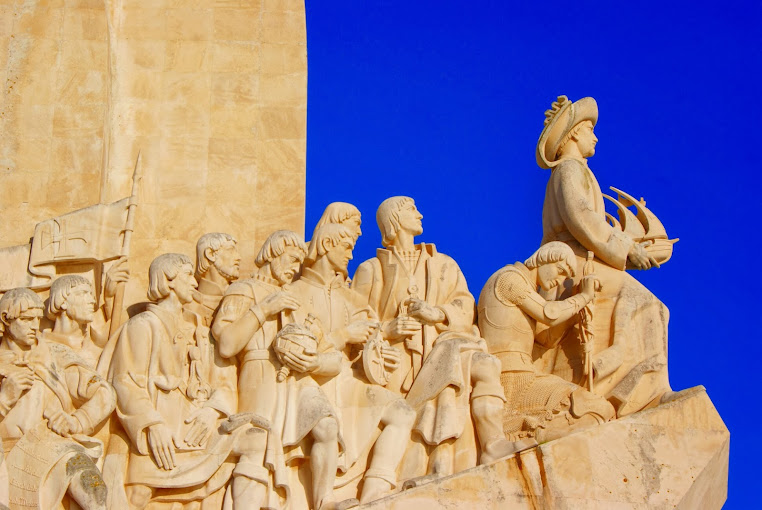


Since november 1991, a monument reminds the courage of two great and brave Portuguese. It is the replica of the Fairey III-B "Santa Cruz", that made the incredible journey from Lisbon to Rio de Janeiro in 1922 and which obviously immediately turned them into heroes.



Gago Coutinho and Sacadura Cabral were acclaimed by this fact in Portugal and Brazil, becoming target to numerous tributes, notably the one made posthumously by the Bank of Portugal, which placed their portrait on banknotes of legal tender in the country.Used as a tool for navigation, a sextant with an added artificial horizon revolutionized navigation of the era.

Curiously, one of the stops that were in its path was to refuel in Las Palmas Gando.
Heroes, no doubt.
Belém Tower is my muse of Lisbon.
It takes the poor poet who is in me, helps me to dig into the soul and extract sentiments and the "saudade", that in the end, sooner or later we all feel when leaving Portugal, as if we abandon a piece of torn soul immersed in the waters of the Tejo.


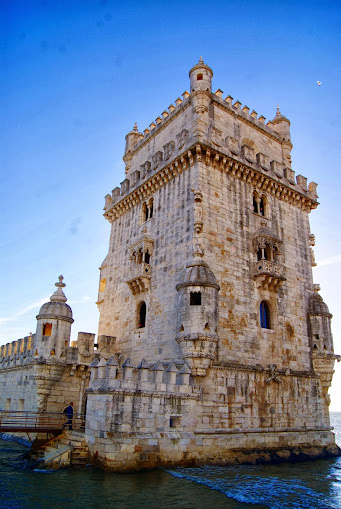
That must have felt the sailors who left their homeland for centuries, for the greater glory of it and its discoverer dynasties, pepper and the silver of Indies, the greatness and misery of the souls. Because the Tower, even unwittingly, seems a ship that enters the River, which also says goodbye, with a captain, the Virgin, that seems to accompany an imaginary fleet that part to the ends of the dark seas from the castle of bow.And those seas dark or luminous, depending on the mood of the one who look at it, was the inspiration of a style, the Manueline, which seems almost fully cover the Tower, with its carved stones mimicking strings and ropes, marine items and armillary spheres, as well as balconies and open Venetian-inspired windows (another rival in the career of conquests), Moorish watchtowers, and battlements decorated with the cross of the Order of Christ. Who dares to pass this drove vessel covering the four cardinal points with its 18 gunboats?

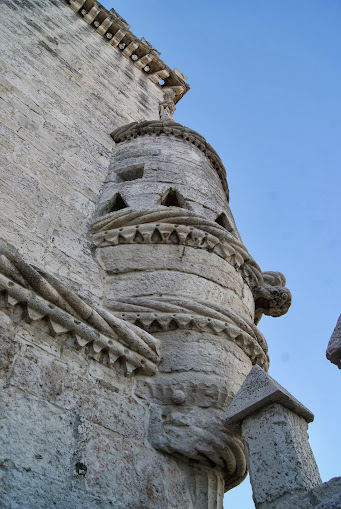


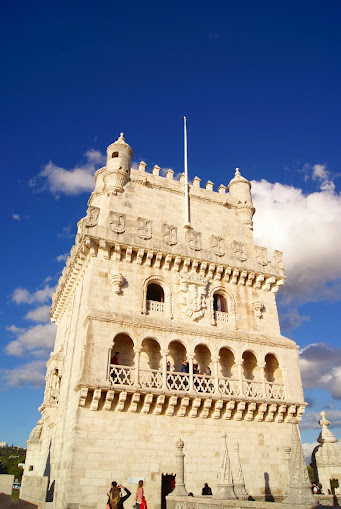
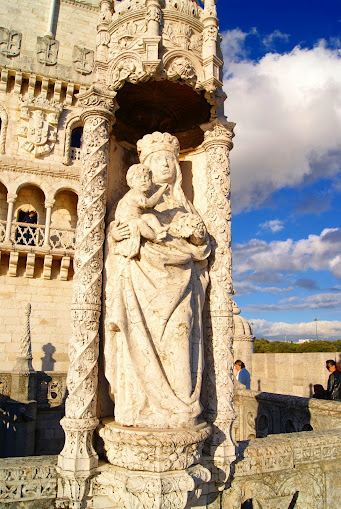
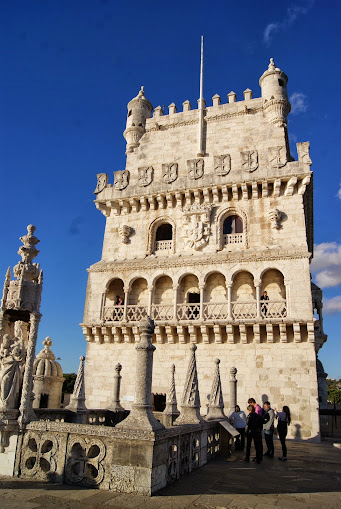

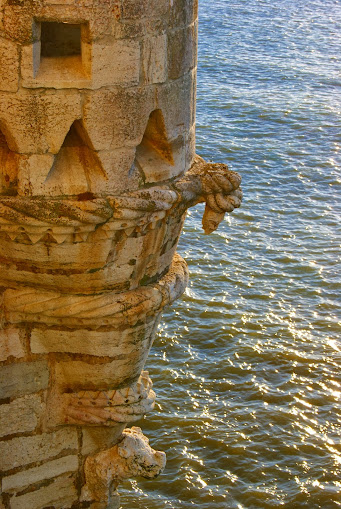
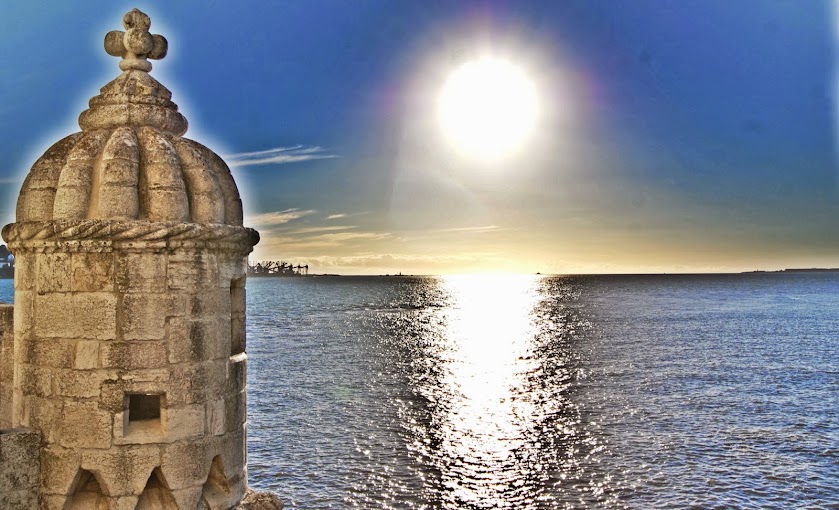
Stores of weapons, dungeons where the damned were confined, throwing them through openings in the ceilings, watchtowers inspired by the minaret of the Kotubia in Marrakech, the evocative image of the Virgin of the Happy Return, a lounge of the Kings which is a real gem and in atop one of the most beautiful panoramas in Europe, with the view of the Tejo and an ocean that sometimes lets us enjoy the nearby Cascais.


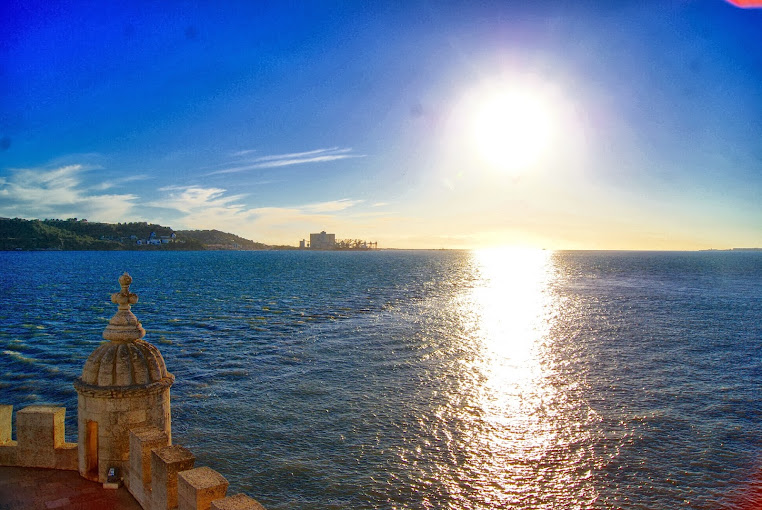



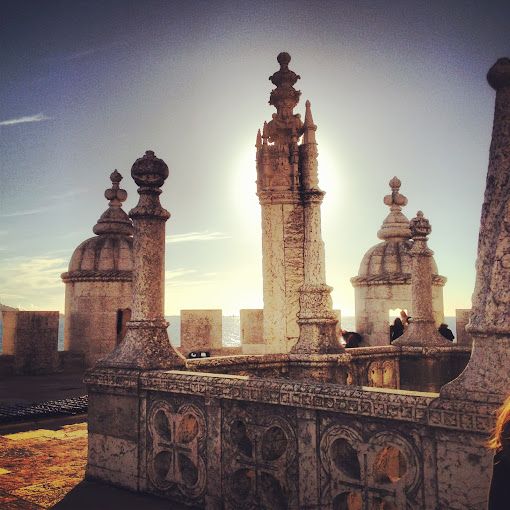
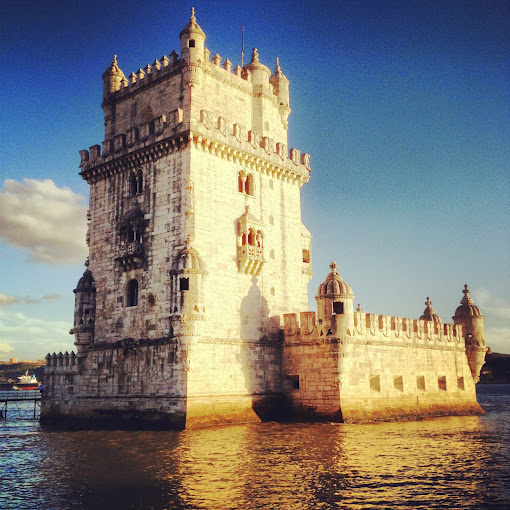
Jewel of Lisbon you are, prison or Castle, white and stranding, ship of stone that does not want to split...And yet it remains a fortress that was built to protect that same river, the same city from 1521, Lighthouse and Watchtower from the capital of an empire that refused to be outdone in the career of conquest. It is a big sin to summarize Lisbon in a day. But better this way. We'll have an excuse to return again and again...Although no excuses are needed to love Lisbon.
In time, because it is still in operation 90% of the original machinery, including the case of the elevator with all luxury of details and materials used at the end of the 19th, and in space because it was not created as a tourist attraction, but as it is today, in part, it serves to provide regular service between the lower city and the steep Chiado.
Always crowded with tourists and people of Lisbon, it takes little less than a minute to make your journey to the top, where without leaving the structure awaits a precious and filigree balcony which gives us a splendid view of all Lisbon, the Tejo river and the nearby ruins of the Igreja do Carmo, a real Gothic relic than after the 1755 earthquake only maintains walls, the arches and the header.

Oh, I forgot to say that for exercise lovers there is a staircase in spiral that saves the 32 meters from the base to the top, where it waits a restaurant where you can eat some specialities of the city or savor a delicious Brazilian coffee or "bica".
And you have to recover strengths. So we stop at the Restinga. This is another one of those places that you only know by pure chance or because a friend of Lisbon, which you can appreciate much, wants you to know.
And that was my case, also with a hunger that now bedeviled my vision and made me not able to distinguish an "elétrico" from a cake of Belem; so we we made a stop on the road and entered in this small but cozy establishment.The layout is perfect, since on the one hand it has a bar with shelves where it exposes the delicious sweet and savoury cakes that we will enjoy, and on the other loose tables where have a sit and savor the rich snacks and some other combo dish or a simple but intense coffee with a bun.




The savory pastries are a real delight. The delicious Faisaninhos, the folhados of meat, spinach and sausage, the hen coxinhas, the sandes, roasted meat, egg or cheese.Meals of delicious homemade taste, in the Centre of Lisbon. To regain energy tasting the specialties of the Lisbon cuisine. Highly recommended!
And all our strengths are necessary to reach the final goal of the day: Belem. And starting by the Monastery of the Jeronimos in the heart of Belém, the monumental soul of Lisbon, that rises from 1502 as Palace of faith, a white stone fortress and colourful stained-glass windows.
The site to build it was not chosen randomly, since the area, near the ancient port of Restelo, was protected by a tiny Chapel of the Madonna of Belém, where tradition says that prayed Vasco da Gama the night of July 7, 1497, before embarking on his historic trip.
So the ground was already sacred, only waiting to be given the importance it deserved. By assumed that the style could not be other than the Manueline, rich in references to the sea and praises conquests, new discoveries and treasures across the seas. And that the new inhabitants of the monastery would be those who would provide spiritual solace to the sailors who undertake the long voyages ordered by Manuel I and which were partly financed by the Knights of the order of Christ, which had its headquarters wall to wall.
However they did not collaborate financially with the construction, since it is financed entirely with money from "pepper", as it was called to that one obtained by the traffic of spices.
And the monks lived there until 1833, year in which were abolished the religious orders in Portugal, and become Casa Pia de Lisboa, an Institute for the care of abandoned children. National Monument, in 1983, was declared Heritage with all honours.

Inside, we remain silent to hear the talk of stones, which tell us about the fortunate and unfortunate deeds of the Portuguese sailors, fear of God and glory to him, stories of stories that reflect the graves of the great Vasco da Gama, Camões, Pessoa or King Manuel I and his wife Dona Maria... and the enigmatic empty tomb of King Dom Sebastião that never returned from his crusade in Africa. Sky of columns and ceilings, which aim to remind perhaps the Amazon discovered with blood and tears by the brave Portuguese, stained-glass windows that let go through the exact amount of fairly light so that the magic of the temple does not break. Back at the top, a stunning crucified who reigns above all space and time
We leave in silence, not only by respecting sacred soil, but also envisioning the grandeur of the Portuguese Empire of which the 1755 earthquake left just a few precious remnants...
Richness, glory, new territories, new souls for the Church, new opportunities for those who might not have them on the old continent...That and more was expected on the other side of the dark ocean to those who had enough arrests to embark in the shells and rafts that floated just at sea in the age of the great discoveries.It was a hard way. Months of crossing and years of expeditions on land, fighting diseases, adverse climates and poisoned arrows.
Many fell; thousands of souls and bodies which, with their sweat and blood, helped to raise an empire that was the envy of many countries. And as a backdrop to all this tragicomedy was Belem. Belem that said goodbye to its sailors and soldiers from the banks of the Tejo, that prayed for them from the chapel of the Virgin, who comforted them in Jeronimos and that defended them from the tower of Belem, which was the last image of the homeland and the first image of greatness and power. So, although late, it was necessary to finish decorating in the way it deserved, a center that was the core of the jewels surrounding her.
So it was decided to renovate the space and build a 280-metre side, the Plaza do Imperio square, making it one of the largest in Europe. In the centre of the square a 3,300 m² garden with a gigantic fountain.
I said before, that it was built a little later, in the time in which that "saudade" of greatness was remembering the past, in the exhibition of the Portuguese world in 1940.
Now not only serves as a tribute and memory of an empire and the living forces that built them, but rather it serves as a small lung to breathe a past, a present and a future.
And it is that Portugal seafaring vocation is so intense and pervasive that it seems to run salt-water through lusitanian veins instead of blood. And a sample is the Padrão dos Descobrimentos.
The ocean without Portugal, Portugal without the ocean is not conceived. Those whoploughed through the great sailors and parish priests as Vasco da Gama, Fernao de Magalhaes, the poet with his Lusiads Camões, the painter Nuno Gonçalves and Kings Manuel I or the one who leads the long row of 32 celebrities, Henrique, the Navigator, who financed the expeditions to the African coast and founded a school of navigation in Algarve.

The 500th anniversary of his death was thought to erect this monument in 1960, creating it in the form of a caravel in honor of the Portuguese Navigator Spirit. What else?
The environment reinforces that spirit with a compass rose which is 50 meters in diameter right in front of the monument of 52 meters high and which tells the story of the Portuguese discoveries over time. It is essential to visit it when evening falls and the stone takes over all the colors of the sunset.
Since november 1991, a monument reminds the courage of two great and brave Portuguese. It is the replica of the Fairey III-B "Santa Cruz", that made the incredible journey from Lisbon to Rio de Janeiro in 1922 and which obviously immediately turned them into heroes.
Gago Coutinho and Sacadura Cabral were acclaimed by this fact in Portugal and Brazil, becoming target to numerous tributes, notably the one made posthumously by the Bank of Portugal, which placed their portrait on banknotes of legal tender in the country.Used as a tool for navigation, a sextant with an added artificial horizon revolutionized navigation of the era.
Curiously, one of the stops that were in its path was to refuel in Las Palmas Gando.
Heroes, no doubt.
Belém Tower is my muse of Lisbon.
It takes the poor poet who is in me, helps me to dig into the soul and extract sentiments and the "saudade", that in the end, sooner or later we all feel when leaving Portugal, as if we abandon a piece of torn soul immersed in the waters of the Tejo.
That must have felt the sailors who left their homeland for centuries, for the greater glory of it and its discoverer dynasties, pepper and the silver of Indies, the greatness and misery of the souls. Because the Tower, even unwittingly, seems a ship that enters the River, which also says goodbye, with a captain, the Virgin, that seems to accompany an imaginary fleet that part to the ends of the dark seas from the castle of bow.And those seas dark or luminous, depending on the mood of the one who look at it, was the inspiration of a style, the Manueline, which seems almost fully cover the Tower, with its carved stones mimicking strings and ropes, marine items and armillary spheres, as well as balconies and open Venetian-inspired windows (another rival in the career of conquests), Moorish watchtowers, and battlements decorated with the cross of the Order of Christ. Who dares to pass this drove vessel covering the four cardinal points with its 18 gunboats?

Stores of weapons, dungeons where the damned were confined, throwing them through openings in the ceilings, watchtowers inspired by the minaret of the Kotubia in Marrakech, the evocative image of the Virgin of the Happy Return, a lounge of the Kings which is a real gem and in atop one of the most beautiful panoramas in Europe, with the view of the Tejo and an ocean that sometimes lets us enjoy the nearby Cascais.
Jewel of Lisbon you are, prison or Castle, white and stranding, ship of stone that does not want to split...And yet it remains a fortress that was built to protect that same river, the same city from 1521, Lighthouse and Watchtower from the capital of an empire that refused to be outdone in the career of conquest. It is a big sin to summarize Lisbon in a day. But better this way. We'll have an excuse to return again and again...Although no excuses are needed to love Lisbon.
No hay comentarios:
Publicar un comentario